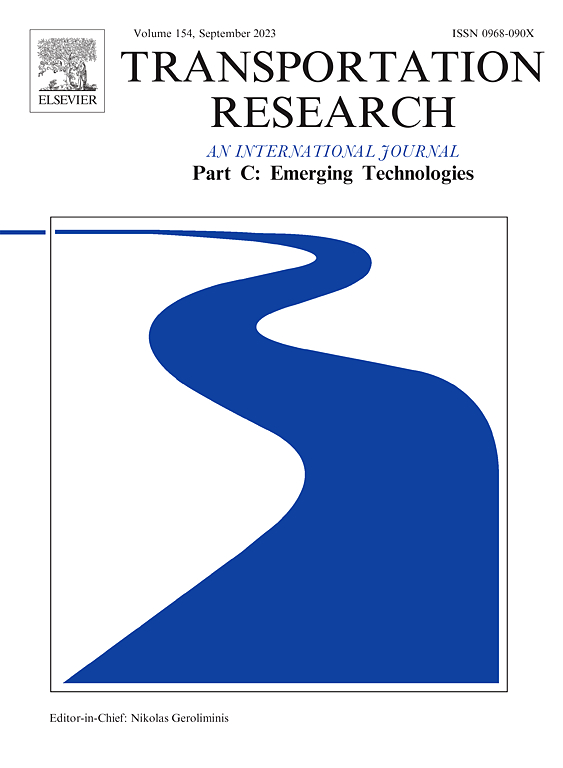Network-wide critical routes identification and coordinated control based on automatic vehicle identification data
IF 7.6
1区 工程技术
Q1 TRANSPORTATION SCIENCE & TECHNOLOGY
Transportation Research Part C-Emerging Technologies
Pub Date : 2025-02-08
DOI:10.1016/j.trc.2025.105019
引用次数: 0
Abstract
Coordinated signal control is an effective way to improve traffic efficiency in urban road networks. This study presents a network-wide coordinated signal control method based on the identification of critical routes and the partitioning of coordinated intersection groups using automatic vehicle identification (AVI) data. A movement-level network representation model is first proposed to identify critical routes by analyzing the fully sampled paths of individual vehicles extracted from the network’s AVI data. Then, the optimization of the entire road network is divided into multiple coordinated intersection groups and potential isolated intersections by minimizing total delay, accounting for the interactions between cycle length and delay at intersections along all critical routes. Based on the ring-and-barrier scheme, the signal control problem for each coordinated intersection group is formulated as a mixed integer linear programming (MILP) model aimed at maximizing the bandwidth allocated to critical route bands. Utilizing real AVI data collected from the network of Baoding City, China, the experimental results demonstrate that the proposed partitioning method outperforms static clustering methods that rely on traffic state, e.g., density, for control purposes, particularly in coordinated intersection groups. In comparison to state-of-the-art studies, the analyses indicate that the comprehensive framework, which ranges from critical routes identification and network partition to traffic signal control based on AVI data, significantly enhances network performance by reducing the queue length and average delay at intersections.
求助全文
约1分钟内获得全文
求助全文
来源期刊
CiteScore
15.80
自引率
12.00%
发文量
332
审稿时长
64 days
期刊介绍:
Transportation Research: Part C (TR_C) is dedicated to showcasing high-quality, scholarly research that delves into the development, applications, and implications of transportation systems and emerging technologies. Our focus lies not solely on individual technologies, but rather on their broader implications for the planning, design, operation, control, maintenance, and rehabilitation of transportation systems, services, and components. In essence, the intellectual core of the journal revolves around the transportation aspect rather than the technology itself. We actively encourage the integration of quantitative methods from diverse fields such as operations research, control systems, complex networks, computer science, and artificial intelligence. Join us in exploring the intersection of transportation systems and emerging technologies to drive innovation and progress in the field.

 求助内容:
求助内容: 应助结果提醒方式:
应助结果提醒方式:


